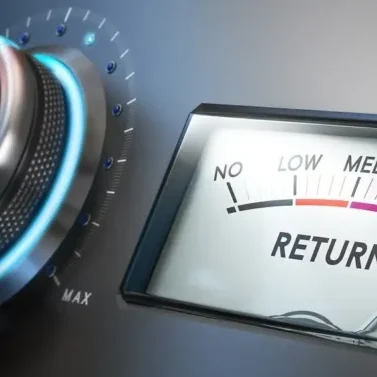How to Finance a FedEx Route Acquisition
Summary: Owning a FedEx route can be a great opportunity for entrepreneurs with the right experience. It allows you to own a logistics and delivery company with a great client base – all while leveraging FedEx's great brand reputation and resources.
However, getting the financing to purchase a FedEx route can be a challenge. This type of business structure does not fit common bank lending models well. Banks finance companies with major assets that can serve as collateral. As we know, this is not the case for many distribution route businesses.
In this article, we discuss:
- Are you buying the business or just some routes?
- Collateral
- Management experience
- Revenue trends
- How to finance a FedEx route purchase
- Transaction structure
1. Are you buying the business or just some routes?
The first item a lender considers is if you are buying a turnkey business – or just some of its routes. This distinction is important because it determines how the lender reviews your transaction.
a) Buy the whole business
The easiest option is to purchase the whole business as a turnkey operation. That approach allows the lender to review the company's total revenues and match them to expenses. Thus, the lender can easily determine if the business is profitable. Due diligence is simple, as the lender can analyze the financial statements and match them to tax returns.
b) Carve-out some routes from a business
Things become more complicated if you are buying only part of the business. This is commonly known as a carve-out. In this scenario, the seller must be able to show the revenues and expenses for the portion of the business they are selling.
Getting the revenue information can be easy – if the seller already tracks revenues in detail. If they don't track revenues in detail, it will be nearly impossible to get this information. Without this information, it is unlikely you will get financing. It's a known "deal killer."
Unfortunately, the complexity does not stop there. Lenders must also find a way to determine the expenses related to the specific portion you are buying. As you can imagine, this process becomes complicated quickly. In most cases, the seller can only provide an estimate of costs. This won't satisfy lenders. Financing carve-outs is challenging and risky. Most lenders won't finance these transactions.
2. Collateral is important
The second thing that lenders assess is the available collateral. As we mentioned, lenders like to finance companies with assets such as real estate, machinery, and equipment.
Now, most FedEx route owners don't have real estate or machinery. The bulk of the assets is concentrated in equipment, such as vans, step-vans, and trucks. This concentration of assets can pose a challenge, which brings us to the next point.
The seller may hold the equipment in one of three ways. They may own the equipment, which is the easiest and simplest scenario to finance. Alternatively, they may lease the equipment, or they may rent it.
Getting funding to buy a route business that has leased or rented equipment is nearly impossible. However, we have developed transaction structures that can help get these opportunities funded.
a) How is your collateral valued?
One area of possible contention may arise when the value of the equipment is appraised. It's common for the parties in an acquisition to want to value the equipment at its current market price. That's what gets you the highest valuations. It's understandable.
Unfortunately, lenders don't work this way.
Lenders prefer to be conservative. They value the equipment using one of the common valuation methods. Most lenders use what's called the "Orderly Liquidation Value." This method values assets assuming that, if needed, they are to be sold "as is and where is" in a reasonable time frame.
Some lenders (usually non-SBA) use the "Forced Liquidation Value" instead. This method assumes the assets are to be sold in a forced sale. This results in a lower value for the equipment.
b) Do the assets have encumbrances?
Encumbrances are claims from lenders, creditors, or taxing authorities against the business. These claims have to be paid (often at closing) before the business can be sold.
For example, assume the seller bought some step-vans with a loan. The loan creates a lien from the bank against the purchased step-vans. The lien is an encumbrance that must be satisfied (paid) so the asset can be transferred to the new owner. The bank releases the lien after the loan is paid off.
3. Management experience
The next thing that lenders look at is the buyer's management experience. The buyer must have experience operating a Pickup and Delivery (P&D) or line haul FedEx route.
This requirement can be a major setback if you don't have the needed experience. However, you can solve this problem. If the seller's business has a manager in place, you can ask the manager to stay on and hire them on an employment contract.
4. Revenue trends
Lastly, lenders examine the revenue trends of the business. Are revenues staying the same, increasing, or decreasing? And, if revenues are decreasing, why are they decreasing?
Lenders finance companies whose cash flow can support operations and debt payment. Understanding your past, current, and future projected revenues is critical. It helps ensure that you will be able to pay the debt. More importantly, it reduces the chances of buying a bad business.
5. How do you finance a FedEx route purchase?
There are a number of ways to finance a business acquisition. However, most FedEx routes that we have seen are financed using one, or all, of the following options:
- SBA-backed loans
- Equipment financing
- Asset-based lending
- Seller financing
a) The SBA is an effective option
Small Business Administration (SBA)-backed loans are an effective way to finance a business acquisition. SBA-backed loans offer competitive rates and are easier to get than conventional loans. They are made specifically to help small business owners and entrepreneurs.
Note that the SBA does not provide loans directly. Rather, they provide guarantees to lenders (or banks). Lenders, in turn, provide the loans directly to entrepreneurs. Like every business loan, they have qualification requirements, which vary from lender to lender. Keep in mind that these loans are made specifically for entrepreneurs, even those that don't have a perfect background.
b) Down payments are usually required
Most transactions require a down payment because lenders finance transactions only when they see a committed borrower – specifically, a borrower who is willing to put their own money into the transaction.
Most transactions require at least a 10% down payment. Generally, a higher down payment increases your chances of getting funding. Learn more about down payment sources and the cost of business a business.
c) Equipment financing and asset-based options
Some transactions can be funded with an equipment financing component. This strategy can be useful if you want to finance vans, step-vans, and power-units (line haul). Most FedEx route acquisitions don't have other assets to finance. However, those that do have other assets can use asset-based financing.
d) Seller financing
Lastly, most transactions include a seller financing component. Seller financing is crucial for a few reasons.
Seller financing can enable you to get terms that are more flexible than bank terms. They can also help reduce your down payment requirement from an SBA-backed loan.
More importantly, seller financing keeps the seller "invested" in the success of your business. This approach helps minimize (but not eliminate) the chances that they are selling you a troubled business.
6. Transaction structure
There is no single best structure to acquire a FedEx route. The structure you use depends on how the seller's business is organized. It also depends on whether you are buying all their routes, or just some of them.
Most transactions we have seen use a small business leveraged buyout (LBO) model. LBOs have the advantage of minimizing the amount of your own money that is invested in the business. However, LBOs don't eliminate the need to put some of your money into the opportunity.
Keep in mind that LBOs come with a risk. If things don't go well, an LBO can eliminate your equity entirely.
Most transactions use a structure that includes a down payment of 5% to 10% along with one or more of these options:
- Seller financing
- SBA-backed financing
- Asset-based financing
- Equipment financing (sometimes)
To learn more about these transactions, read "FedEx Case Study - Route Acquisition using a LBO" and also "FedEx Route Pros and Cons."
Need to finance a FedEx route acquisition?
The first step to work with us is to submit this form. Once we review it, one of our associates will contact you to discuss the specific details of your acquisition.
Editor's note:
This information should not be considered legal or financial advice. Given the complexity of business acquisitions, this document is not guaranteed to be 100% accurate or cover every potential option. However, we make every effort to provide you with the best information. If you have comments, suggestions, or improvements, contact us via LinkedIn. Also, we are not associated with the FedEx brand in any way.






